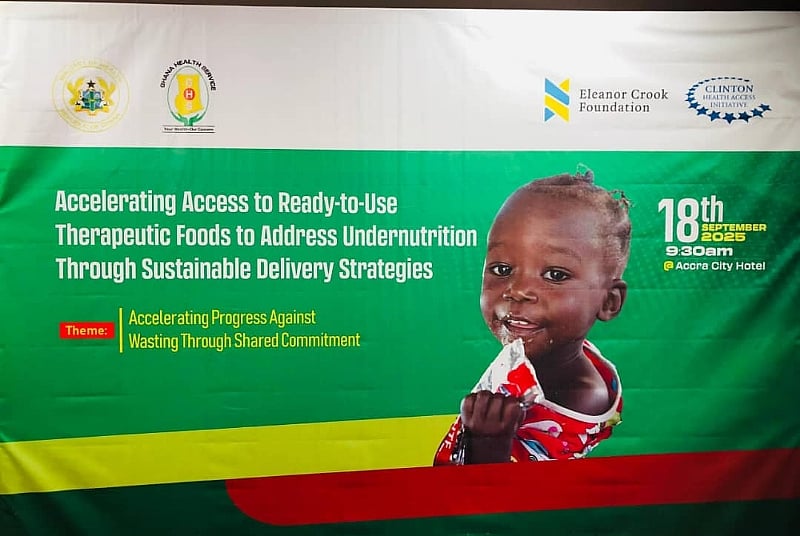Ghana has embarked on a transformative journey to combat child malnutrition, a persistent public health challenge that has plagued the nation for far too long. The newly launched US$2.15 million initiative represents a paradigm shift, moving away from dependence on sporadic donor funding towards a sustainable, government-led system for the treatment of severe acute malnutrition. With the ambitious goal of reaching 90% of affected children, the program aims to integrate life-saving Ready-to-Use Therapeutic Food (RUTF) into the core of Ghana’s healthcare infrastructure. This commitment signifies a monumental step towards ensuring that no child suffers the debilitating consequences of malnutrition, paving the way for a healthier and more prosperous future for the nation’s youngest generation.
The urgency of this initiative is underscored by the stark reality of malnutrition’s prevalence in Ghana. The 2022 Demographic and Health Survey revealed that a significant portion of children under five suffer from wasting, a severe form of malnutrition characterized by rapid weight loss and an increased risk of illness and death. Despite the availability of effective treatments like RUTF, access has been severely limited, leaving thousands of vulnerable children without the critical care they need. This new program seeks to rectify this disparity by establishing a reliable and consistent supply of RUTF, ensuring its availability at all levels of the healthcare system. By proactively addressing malnutrition, Ghana is not only saving lives but also investing in the long-term health and development of its human capital.
The program’s strategic approach is built upon a robust foundation laid during the initial phase of implementation. This foundational work included the crucial revision of national guidelines for managing acute malnutrition, incorporating RUTF into the essential medicines list, and extensive training of healthcare professionals. Perhaps most importantly, the initial phase demonstrated the feasibility and cost-effectiveness of procuring RUTF through strategic partnerships, achieving a significant reduction in costs. This success underscores the potential for scaling up treatment coverage while maintaining fiscal responsibility, creating a sustainable model for long-term impact. The distribution of essential diagnostic tools further strengthens the program’s reach and effectiveness, ensuring that malnutrition is accurately identified and promptly addressed.
The second phase of the initiative, now underway, focuses on seamlessly integrating malnutrition treatment into the fabric of Ghana’s healthcare system. This entails incorporating RUTF into the National Health Insurance Scheme, ensuring equitable access for all children regardless of their socioeconomic background. Strengthening procurement systems at national and regional levels will guarantee a consistent and reliable supply of RUTF, eliminating the dependence on unpredictable donor funding. Continuous training of healthcare workers, aligned with the latest World Health Organisation protocols, will ensure that treatment is delivered with the highest standards of care. This comprehensive approach aims to create a robust and resilient system capable of addressing the multifaceted challenges of child malnutrition.
The significance of Ghana’s initiative extends far beyond its national borders. It serves as a beacon of hope and a powerful example for other nations grappling with the pervasive issue of child malnutrition. By demonstrating its commitment to financing and scaling up treatment through its own health system, Ghana has established a groundbreaking model that has the potential to inspire similar efforts across sub-Saharan Africa. The initiative aligns perfectly with the global Nutrition for Growth agenda, highlighting the importance of investing in cost-effective nutrition interventions to save lives and reduce health disparities. The ripple effect of Ghana’s actions could be transformative, sparking a wave of change that improves the health and well-being of children across the continent.
As Ghana embarks on this second phase, optimism abounds. The promise of reliable access to life-saving treatment has instilled renewed hope in families across the nation, particularly in high-burden regions. The initiative represents more than just a health program; it’s a symbol of progress, a testament to the power of commitment and collaboration. By investing in the health of its children, Ghana is investing in its future, paving the way for a generation that can thrive and contribute to the nation’s continued growth and prosperity. This initiative is a testament to the belief that every child deserves a healthy start in life, and Ghana is leading the charge to make that a reality.


